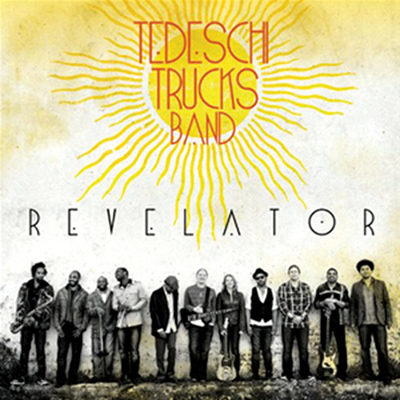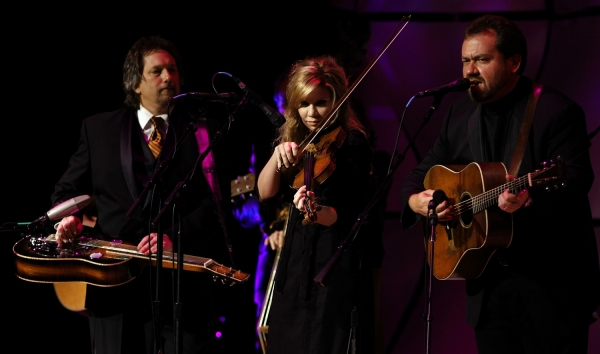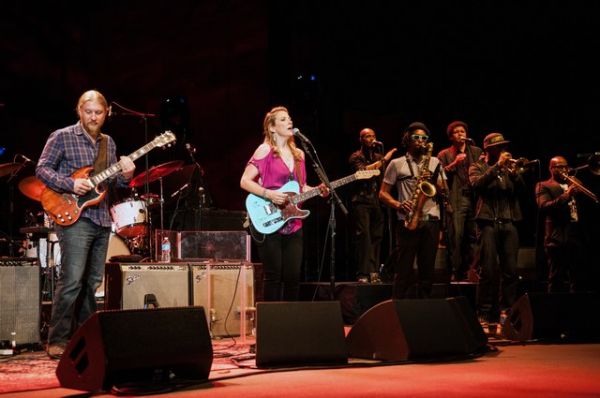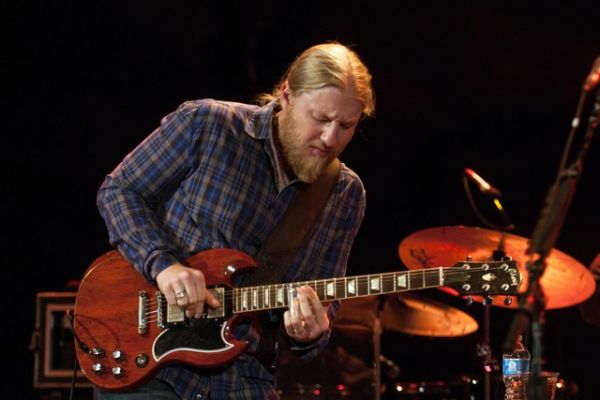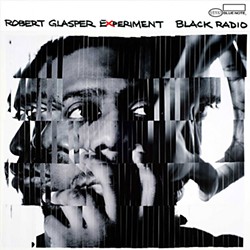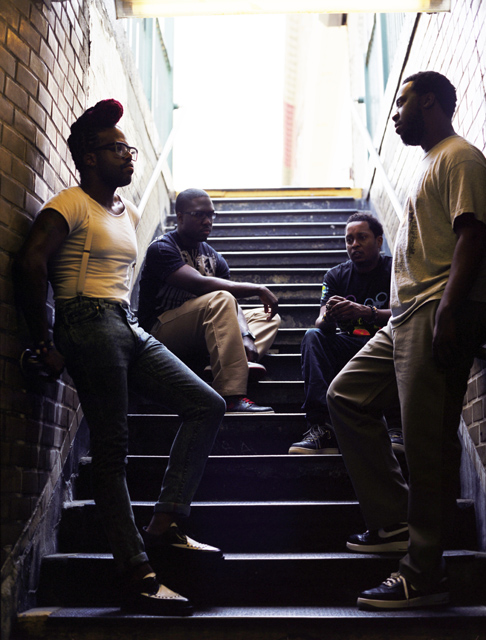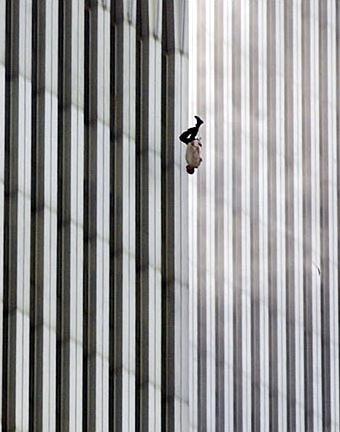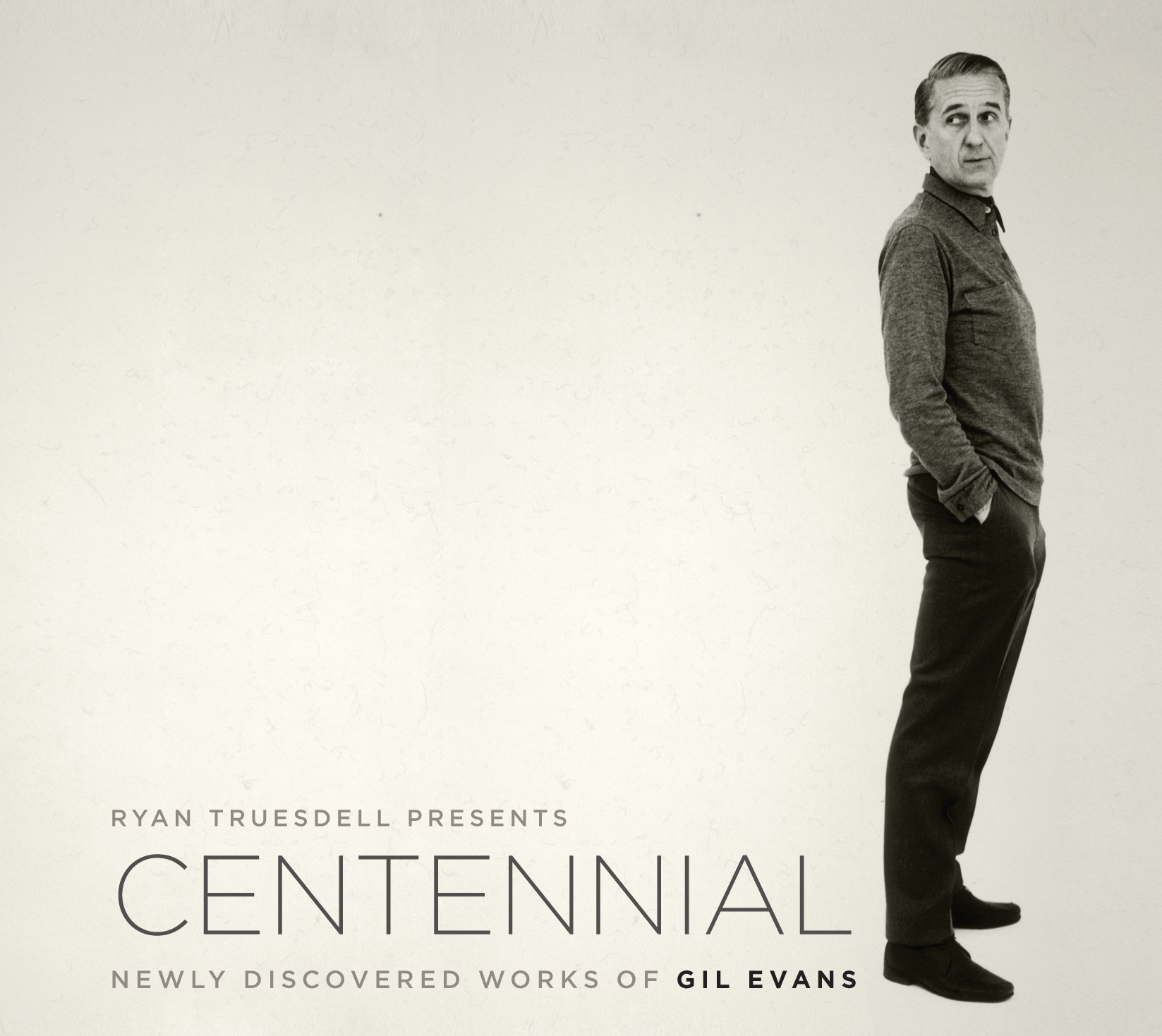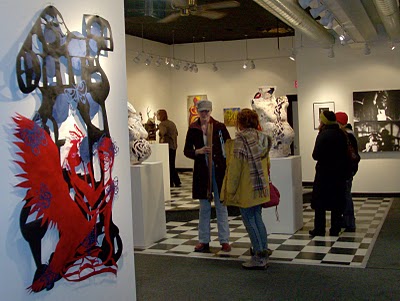“Revelator,” TTB’s debut album, won the 2012 Grammy for Best Blues Album
COMPARISON – So what other current American vernacular music group might be a contender for the best band on the scene today? Plenty of you may make staunch cases for innovative and artful bands like Wilco, My Morning Jacket, The Hold Steady, The National, The Drive-By Truckers and others.
But another band, like TTB, plumbs and propels roots-music genres with rare artistry. Alison Krauss & Union Station also boasts a great female lead singer/instrumentalist and a master string instrumentalist, and provide an interesting contrast as an acoustic band. This band has two strong lead singers in Krauss and Dan Tyminski, whose sinewy bluegrass voice dubbed George Clooney’s singing in the Coen brothers movie O Brother Where Art Thou? He and Krauss also greatly aided that soundtrack album’s remarkable advancement of bluegrass music into the mainstream. Union Station’s dobro player Jerry Douglas is among the most resourceful and fluent stylists in contemporary music and banjoist-guitarist Ron Block is no front porch picker.
Krauss’ wide-ranging Grammy-studded career speaks volumes for itself — recently highlighted by her stunning 2009 collaboration with Robert Plant, Raising Sand, which won the Album of the Year Grammy. She’s a rare and exquisite singer and interpreter and an expert bluegrass fiddler whose done as much as anyone in recent memory to bring traditional country and bluegrass to wider audiences.
But we’re comparing groups here. AK & US has a far longer and celebrated track record as a group and they matched TTB in their genre category by snagging the 2012 Grammy for Best Bluegrass Album for Paper Airplane. AK & US brilliantly combines bluegrass, country and folk musics with a contemporaneity that honors and expands those traditions. Comparably, TTB mixes blues, rock, R&B, gospel and jazz into their own meaty stew.
And Union Station’s Jerry Douglas is a truly eclectic innovator whose use of a slide resonator guitar, or dobro, underpins his kaleidoscopic spangled, bluesy style, as does Trucks’ bottleneck slide. Both players draw deeply from jazz as well. Douglas’ usually plays his evocative instrument standing but it hangs from his strap flat up like a lap steel. So few have comparably mastered the dobro that he’s been heard on 1,500 (count ‘em) recordings. He’s a walking one-man soundtrack, with his own load of country and bluegrass Grammies. John Fogerty calls him “my favorite musician.”
(L-R) Jerry Douglas, dobro; Alison Krauss vocals and fiddle, Dan Tyminski vocals and guitar. Photo: AP/Mark Humphrey
Yet neither Krauss nor Douglas in Union Station has the stylistic and expressive range and dynamic power of Tedeschi-Trucks, though admittedly we’re comparing a largely acoustic group to an electric one. And yet, TTB also plays pianissimo superbly.
Tedeschi has commented: “It’s amazing when you have two drummers. You can get really super quiet or you that you can get like a freight train is coming, you know (laughs). So I think having that dynamic range was really important was because I think people are really moved by dynamics as well as melody.” 2
Her band also has a strong second lead vocalist, Mike Mattison, the lead singer of Trucks’ band before his wife joined. Mattison has taken a back seat to her; yet Tedeschi is so compelling and dynamically varied that few want to stop listening to her. By contrast, the sweet, angelic purity of Krauss’s soprano, lovely as it is, calls for auditory contrast much sooner, to my tastes.
A CLOSER LOOK AT MUSICAL CHEMISTRY — Tedeschi and Trucks met in New Orleans when her band opened for the Allman Brothers Band’s 1999 Summer Tour. These great individual talents now compound each other. One apparently jealous concertgoer complained that Tedeschi spent too much time focused on Trucks playing onstage rather than playing to the audience. To me this reflects the couple’s intense synchronicity, wrought by their working together as two great musicians, in love. More than just a singer, she’s also a fine blues guitarist who obviously appreciates and feeds off of her husband’s instrumental brilliance. Such evident marital chemistry is pretty rare to witness onstage and a key to the heights this group has achieved so swiftly.
All of these elements are vividly evident in the turbo-charged performance of “Space Captain” from the 2010 Crossroads Guitar Festival. Here, sans guitar, Tedeschi is playing to the audience, exhorting them to clap along. As the song builds to its climax with Trucks’ solo, Tedeschi call and response-style interjections push the performance to an extraordinary peak of intensity and, given the “learning to live together” refrain, a kind of white-hot striving for some idealistic pinnacle of human possibility. This You Tube vid — uploaded on February 3, 2011 — had an amazing 733,506 hits when I last looked. http://www.youtube.com/watch?v=3Eb_UXDxUbs
Clearly the song that has caught the imagination of YouTube surfers. With Warren Haynes adding the Allmans’ double-lead guitar effect and David Hidalgo and bassist Conrad Lozano of Los Lobos sitting in, not to mention the wailing horns and the double drive of the two drummers — “Space Captain” soars virtually to the distant utopian planet they’re singing about. *
This band has a familial chemistry that, like many marriages, may not last a lifetime, but for now it’s incendiary. So you can’t help for rooting for the old marital institution in this case. This union benefits millions more than themselves and their family.
Tedeschi says she and Trucks felt affinity the first day they met: When I heard him play, I was like, “Gosh, he plays kind of like I sing,” she recalled to the Arizona Republic recently. “And he thought the same thing. In a lot of ways, when we sit down and play, it’s almost like we finish each other’s sentences, but musically. We have a really strong connection there. And Derek also has a connection with (bassist) Oteil Burbridge, because he’s been playing in the Allman Brothers with him for over a decade. So they have that ESP quality. And then, of course, Oteil has that with his brother, Kofi (the band’s keyboardist/flutist), because they’ve been brothers their whole lives. And I have it with Falcon (drummer Tyler Greenwell’s nickname). Falcon has it with JJ and before you know it, the whole band has ESP between each other. 3
Part of the group’s success is that, for all its instrumental prowess — all three horn players receive solo spotlights sooner or later — it does not consider itself a jam band, and their song orientation has helped them reach a larger audience even though in concert their tunes typically stretch to 10 and 15 minutes. But there seems to be a discipline, a self-awareness and sense of form to the groups improvising, led by Trucks’ almost invariably well-structured solos and incisively crucial accompaniment their songs.
Consider a close listen to “Until You Remember.” A mournful brass obbligato opens, gently mocking the prayerful supplication that follows. The song then proceeds unassumingly, the singer beginning to seem self-pitying, rocking between F and D and A-flat and E flat, with the forsaken woman singing almost to herself.
Every night I pray/ that you’ll come back today/and hold me like you used to
every night I spent/just waiting on your scent/needing just a trace of you
Then from F comes the falling pedal C sharp major chord which conveys both angst in the chromatic accidental and hope in the major tonality. Tedeschi implores:
I know it ain’t refined/but I’ll hold your place in line/’til you remember that your mine.
The pedal C sharp tolls over each of these phrases. That harmonic blues descent, combined with Tedeschi’s brave vocal response, is the majestic backbone of the song. Trucks then lashes the chord changes with blood-on-my-fingers guitar, even though it’s a mere few moments, rather than a drawn-out solo.
There song aches with an acknowledgment that, for all the singer’s willful passion, she may wait a long time for the beloved to truly remember “you’re mine.” So “Until You Remember” dwells in painful awareness, moral choices, loss, loneliness and desperate faith — a devastating distillation of all-too-common human experience.http://www.youtube.com/watch?v=8RRWQsZN1cc&feature=related
As with most of their originals, poised understatement and emotionally charged climaxes show the group’s artistic maturity.
A recent concert goer named Vuke perhaps over-enthused online about a Sept. 7concert at the Bob Hope Theater in Stockton California: “Derek Trucks was as you’d expect from a lad that grew up with the Allman Brothers Band…as good a guitar player as I’ve ever seen…(that includes Jimi, Eric, BB, Albert King, Buddy Guy, Muddy Waters, Jimmy Page). I’ve seen them all and it simply doesn’t get any better.”
Part of the effect of his playing is Trucks’ electrified finger style plucking and deep-seated harmonic resonances, drawing from Elmore James, as he has noted:
“There was something unleashed in his playing, that acoustic guitar with the electric pickup. When he’s singing, you hear his voice through the electric pickup.”
James also informs Trucks’ concise choice of notes: Of James’ solo in a 1960 version of “Rollin’ and Tumblin,'” he commented: “It’s real simple, but every note is in the right spot – funky and nasty. Say ‘Play that Elmore lick,’ and everybody knows what to do.” 4
Trucks normally plays that bottleneck in an open E tuning, which allows him a sort of modal and enharmonic freedom, and a sharp chromatic potency. But he can also play with deft finger fretting, often on the slower tunes.
This sophistication reflects the jazz and eastern music influences Trucks brings to the band. I didn’t warm up immediately to Truck’s style but now the slight chill effect of his slide tone sounds slightly akin to John Coltrane’s very tight reed sound, which conveyed an unlikely taciturn melancholy under all his expressionistic flights.
Then there’s the guitar-as-sitar intro to “These Walls” and the raga-like interlude on the live version of “Midnight in Harlem” on Everybody’s Talkin’. The band’s jams on the second disc are often rave ups, like Stevie Wonder’s “Uptight” and the gospel classic “Wade in the Water.” The second disc of the live CD was criticized in a recent Down Beat review for including a certain amount of album “padding.”
Some of these moments may feel less than riveting to a home listener, but far more often the cover song arrangements and the solos display consistent wit, fire and imagination — possibly better appreciated as musical theater, especially bassist-vocalist Otiel Burbridge (who recently announced he was leaving for his family.).
From its searing peak moments to its most genre-stretching jams, this band represents a deep expansive redefinition of the blues.
As both leaders are serious guitarists, the band’s spiritual power may emanate partly from what rock critic-historian Robert Palmer has called The Church of the Sonic Guitar. The electric guitar has captivated generations partly because, as an ancient non-Western music theory goes, the instrument’s myriad untempered and unleashed vibrational overtones come from “a system of ratios or tonal portions that not only exist independently in nature but may underlie reality itself.” 5
The speed with which The Tedeschi Trucks Band has traveled so far in the last year also strongly suggests they may be carrying much of this nation’s very troubled Zeitgeist — in a more existential way which the music embodies, and transcends, as only great music can. It feels that way also because of how this band — of multiple racial hues — recasts America’s native culture which, like so much of our tragic and heroic history, emerges from the South. Yet the real forsaken lives that dwell in the blues today, the struggles of race and class, come from just about everywhere. If this motley-but-inspired crew doesn’t speak for the 99%, who does?
The band’s African-American Harvard-educated singer Mike Mattison (who wrote “Midnight in Harlem” and “Bound for Glory” among others) touched on this in the liner notes to Road Songs, the two-record live album that the Derek Trucks Band released shortly before that band’s hiatus, which led to the expanded new band.
“Like any southern band worth his salt, the DTB knows that the blues are the fount of American music itself – and that’s how we treat it,” Mattison wrote. “As a Northerner, I’ve learned that the South is like the blues is like the Derek Trucks Band: Everyone thinks they have it pegged it, but you don’t know what it means until you’ve lived in it a while.” 6
I’m sure Mattison would say as much about the Tedeschi Trucks Band. Does American music gets any better than this today? What do you think?
____________
* “Space Captain,” an old Joe Cocker song, was also Tedeschi and Trucks’ powerful contribution to Herbie Hancock’s ambitious international Imagine recording project, which demonstrated a great sense of jazz dialogue amongst the musicians.
1 http://reviews.ticketmaster.com/7171/1567745/tedeschi-trucks-band-reviews/reviews.htm?page=38
2 Read more: http://www.rollingstone.com/music/lists/100-greatest-guitarists-20111123/elmore-james-19691231#ixzz26HGQ8UoI
5 ibid.
6 Suarez, Ernest “‘Already Free,’ Trucks Rolls On The Guitar Hero Pays Homage to the Past”. The Washington Post. http://www.washingtonpost.com/wp-dyn/content/article/2009/05/28/AR2009052801213.html. Retrieved 2009-10-03.
7 Rock ‘n Roll: An Unruly History, Robert Palmer, Harmony Books, 1995, 195
8 liner notes by Mike Mattison, Roadsongs, The Derek Trucks Band, Sony Masterworks CD, 2010


